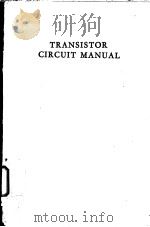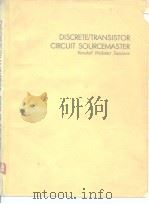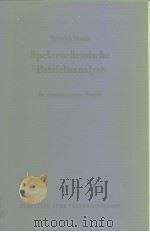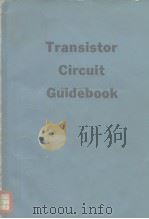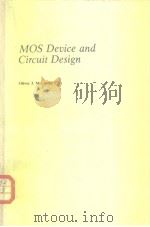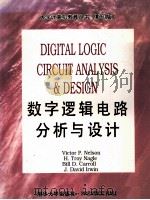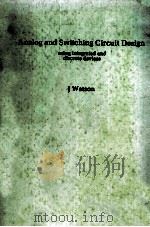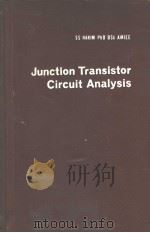《TRANSISTOR CIRCUIT ANALYSIS AND DESIGN》
| 作者 | FRANKLIN C.FITCHEN 编者 |
|---|---|
| 出版 | 未查询到或未知 |
| 参考页数 | 356 |
| 出版时间 | 没有确切时间的资料 目录预览 |
| ISBN号 | 无 — 求助条款 |
| PDF编号 | 811739388(仅供预览,未存储实际文件) |
| 求助格式 | 扫描PDF(若分多册发行,每次仅能受理1册) |
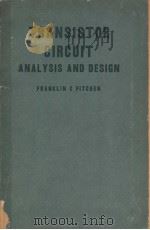
1.INTRODUCTION TO THE TRANSISTOR1
1-1Semiconductors2
1-2 Diodes3
1-3 Transistors4
1-4 Symbols6
1-5 Graphical Characteristics7
1-6 The Operating Point10
1-7 Amplification11
1-8 Leakage Currents14
1-9 Saturation and Cutoff Regions15
1-10 Summary17
2.SEMICONDUCTOR PHYSICS20
2-1Structure20
2-2 Impurities21
2-3 Energy-Level Diagrams24
2-4 p-n Junctions26
2-5 Transistor Operation29
2-6 Transistor Fabrication32
2-7 Other Transistor Types33
2-8 Operation at High Frequencies34
2-9 Metallic Contact Devices36
2-10 Switching Devices37
2-11 Allied Semiconductor Devices39
3.THE OPERATING POINT43
3-1Bias Stability44
3-2 Variations45
3-3 Circuit Studies47
3-4 Fixed Bias49
3-5 Single-Battery Bias52
3-6 Emitter Bias54
3-7 Self Bias56
3-8 Cutoff Bias58
3-9 Other Means of Setting the Operating Point58
3-10 Drawing the Load Line59
3-11 Design of Biasing Circuitry61
3-12 Summary63
4.EQUIVALENT CIRCUITS AND THEIR PARAMETERS69
4-1Equivalent Circuits69
4-2 Current-Generator Equivalent Tee71
4-3 Matrix Parameters80
4-4 The Hybrid Equivalent Circuit81
4-5 Parameters90
4-6 Comparison of Configurations97
4-7 Stabilization of Gain100
4-8 Gain Considerations102
4-9 Examples of Single-Stage Calculations104
4-10 Instantaneous Analysis107
4-11 Summary109
5.SINGLE-STAGE AMPLIFIER DESIGN114
5-1Choice of a Transistor114
5-2 Coupling116
5-3 High-Frequency Considerations122
5-4 Load Lines129
5-5 Design of Single-Stage Low-Power Amplifiers131
5-6 Effects of the Operating Point upon Gain136
5-7 Summary137
6.LARGE-SIGNAL AMPLIFIERS141
6-1Limitations141
6-2 Thermal Considerations143
6-3 Large-signal Parameters147
6-4 Modes and Configurations148
6-5 Distortion149
6-6 Class-A Amplification151
6-7 Shifting of the Operating Point154
6-8 Class-B Amplification155
6-9 Phase Inverters158
6-10 Summary161
7.MULTISTAGE AMPLIFJERS165
7-1Analysis by Blocks165
7-2 Analysis by Kirchhoff’s Laws168
7-3 Analysis by h-Parameters169
7-4 Design of Multistage Amplifiers171
8.FEEDBACK188
8-1Feedback—General Theory188
8-2 Local Feedback195
8-3 Multistage Feedback199
8-4 Automatic Gain Control206
8-5 Direct-Coupled Amplifiers209
9.COMMUNICATIONS AMPLIFIERS226
9-1Noise226
9-2 Volume Control231
9-3 Shaping of the Frequency Response233
9-4 High-Frequency Performance237
9-5 The Video Amplifier244
9-6 Tuned-Circuit Theory246
9-7 Tuned Amplifiers252
9-8 Instability of Tuned Amplifiers255
9-9 Tuned Amplifier Design257
10.COMMUNICATIONS CIRCUITS AND SYSTEMS270
10-1Oscillation270
10-2 Modulation281
10-3 Detection285
10-4 Conversion and Mixing289
10-5 The AM Receiver291
10-6 The FM Receiver292
11.PULSE CIRCUITS304
11-1Switching304
11-2 Pulse Amplifiers314
11-3 Multivibrators315
APPENDICES325
Ⅰ.Selected Transistor Data325
Ⅱ.Parameter Conversions342
Ⅲ.NBS Preferred Circuit No.201 Silicon Transistor Video Amplifier344
INDEX350
《TRANSISTOR CIRCUIT ANALYSIS AND DESIGN》由于是年代较久的资料都绝版了,几乎不可能购买到实物。如果大家为了学习确实需要,可向博主求助其电子版PDF文件。对合法合规的求助,我会当即受理并将下载地址发送给你。
高度相关资料
-
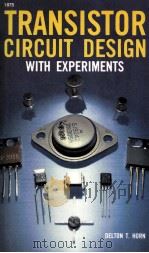
- TRANSISTOR CIRCUIT DESIGN WITH EXPERIMENTS
- 1985 TAB BOOKS INC
-
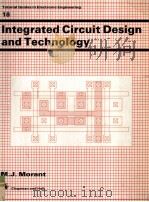
- Integrated Circuit Design and Technology
- 1990 Best-Set Typesetter Ltd
-
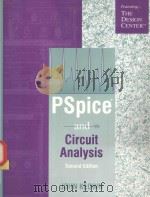
- PSPICE AND CIRCUIT ANALYSIS
- 1993 PRENTICE HALL
-
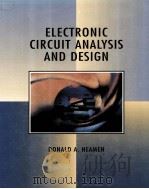
- ELECTRONIC CIRCUIT ANALYSIS AND DESIGN
- 1996 MCGRAW-HILL/WCB
-
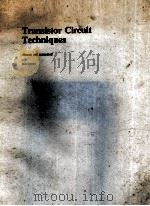
- TRANSISTOR CIRCUIT TECHNIQUES
- 1983 VAN NOSTRAND REINHOLD(UK) CO.LTD
-
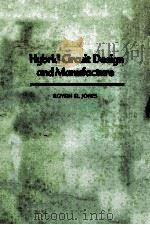
- TYBRID CIRCUIT DESIGN AND MANUFACTURE
- MARCEK DEKKER
提示:百度云已更名为百度网盘(百度盘),天翼云盘、微盘下载地址……暂未提供。➥ PDF文字可复制化或转WORD
